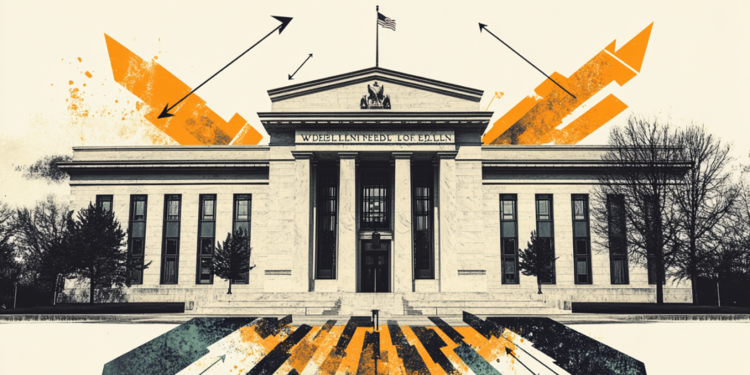- The US dollar came under renewed selling pressure during the trading session on Wednesday.
- Fed bets weigh on US Treasury yields and force the Dollar Index to push lower.
- The Fed’s monetary policy announcements and comments from Chairman Powell could boost the action of the US dollar.
The U.S. dollar (USD) struggled to find demand during US trading on Tuesday and the US dollar index (DXY) snapped a three-day winning streak. The Dollar remains under selling pressure into mid-week and the DXY remains in negative territory as investors lean towards a bearish slant on the Federal Reserve’s (Fed) policy outlook ahead of the rate announcement. interest.
The sharp fall in regional bank values after the failure of the First Republic Bank on Tuesday revived fears of a worsening of the financial crisis in the United States. Market participants are increasingly concerned about the possibility of a recession in the US economy and believe the Federal Reserve will pause its rate tightening cycle after opting for a 25 basis point hike ( pb) on Wednesday, May 3.
According to CME Group’s FedWatch tool, the probability of the US central bank raising rates yet again in June is close to 0%, up from almost 40% just a week ago.
Market Drivers Daily Recap: Dollar Struggles to Strengthen
- The Fed is expected to increase its official interest rate by 25 basis points (bp), until it is between 5 and 5.25%.
- FOMC Chairman Jerome Powell will comment on the policy outlook and answer questions from the press starting at 18:30 GMT.
- Data released by Automatic Data Processing (ADP) showed on Wednesday that private sector employment in the US increased by 296,000 people in April, far exceeding market expectations for an increase of 148,000 people.
- Related to the survey results, “Employers are hiring aggressively while holding back wage increases as workers come out of idleness. Our data also shows that fewer people are switching jobs,” stated Nela Richardson, chief economist at ADP.
- The ISM services PMI improved modestly to 51.9 in April, from 51.2 in March. This reading revealed that business activity in the services sector continued to expand at a gentle pace. The prices paid index, a component of inflation, rose to 59.6 from 59.5 and the employment index fell to 50.8 from 51.3.
- In anticipation of the Fed event, “uncertainty about the nature of the slowdown and the impact of the banking crisis will likely lead the Fed to repeat its dovish stance,” FXStreet analyst Yohay Elam said. “I expect this caution leads investors to hope that the Fed has ended its hike cycle, entering a pause period followed by cuts. Stocks and gold would rise on such expectations, while the dollar would fall.”
- Data released by the US Census Bureau revealed Tuesday that new orders for manufactured goods, factory orders, rose $4.9 billion, or 0.9%, to $539 billion in March.
- The US Bureau of Labor Statistics (BLS) announced that the number of job openings on the last business day of March stood at 9.59 million, up from 9.97 million in February. This figure was below market expectations, which expected 9.77 million.
- The ISM manufacturing PMI improved slightly to 47.1 in April, from 46.3 in March. This reading showed that the contraction in activity in the manufacturing sector was continuing, albeit at a softer pace.
- The ISM survey also revealed that the prices paid sub-index, the input inflation component, rose to 53.2 from 49.2, reinforcing the Fed’s hawkish narrative.
- US regulators seized First Republic Bank and agreed to sell most of its assets to JPMorgan Chase & Company. Last week, the bank reported that there had been deposit outflows worth more than $100 billion in the first quarter.
- In the first half of the trading session on Tuesday, shares of PacWest Bancorp were down more than 30%, while those of Western Alliance Bancorporation were down more than 20%. The Dow Jones index of financial stocks lost more than 1% on the day.
- The European Central Bank (ECB) pointed out in its Survey on bank loans that a net 38% of the banks in the euro zone reported a drop in the demand for credit by companies in the first quarter of the year. The ECB will announce its monetary policy decisions on Thursday.
Technical Analysis: US Dollar Index Bearish Outlook Remains Intact
On the daily chart, the relative strength index (RSI) of the US Dollar Index (DXY) pulled back below 50 on Wednesday. Furthermore, the DXY remains below the 20-day Simple Moving Average (SMA), which is currently at 101.80, reflecting the bearish shift in the near-term technical outlook.
On the downside, the DXY could first face the support at 101.00 (static level, psychological level) before bears target the key psychological level of 100.00.
101.80 (20-day SMA) lines up as interim resistance. On a daily close above that level, the DXY could extend its bounce towards 102.50 (static) and 103.00 (50-day SMA, 100-day SMA).
Frequently asked questions about the US dollar
What is the US dollar?
The US dollar (USD) is the official currency of the United States of America, and the “de facto” currency of a significant number of other countries where it is in circulation along with local banknotes. It is the most traded currency in the world, accounting for more than 88% of all global currency movement, or an average of $6.6 trillion in transactions per day, according to 2022 data.
After World War II, the USD took over from the British pound as the world’s reserve currency. For most of its history, the US dollar was backed by Gold, until the Bretton Woods Agreement of 1971, when the gold standard disappeared.
Source: Fx Street
I am Joshua Winder, a senior-level journalist and editor at World Stock Market. I specialize in covering news related to the stock market and economic trends. With more than 8 years of experience in this field, I have become an expert in financial reporting.







